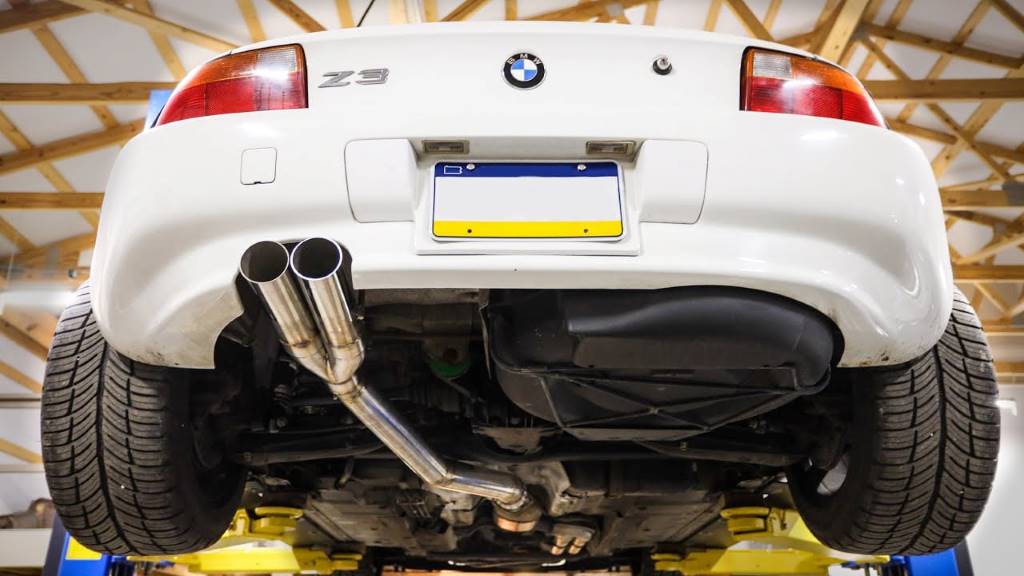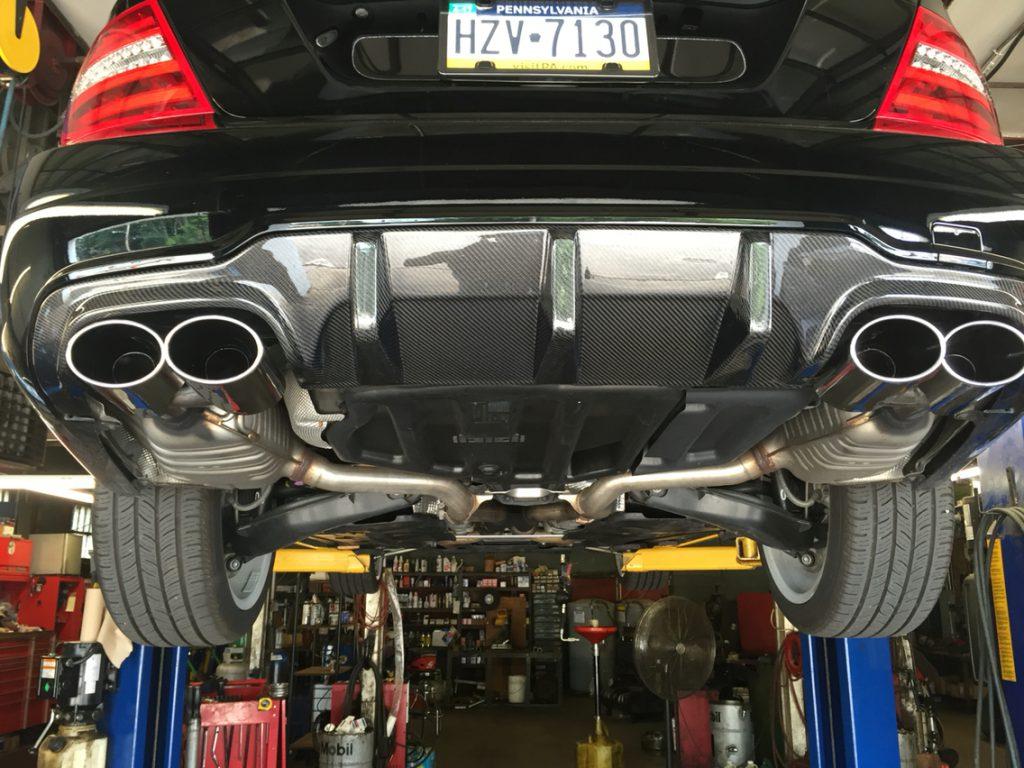Everything You Need To Know About Straight Pipe Exhaust
For those who wish to augment the high-end performance of their ride, the straight pipes are the way to go. They are the top-end exhaust systems that provide the least amount of backpressure. Known as the most admired automobile performance add-on, a straight pipe exhaust is just a pipe that starts from the header.
To explore more about the top-performance straight pipe exhaust system, you need to read out below.
A Handy Guide To Straight Pipe Exhaust
To open the issue today, what are straight pipes?
Overall, a classic exhaust system comprises mufflers, catalytic converters, and resonators to lessen sound levels and emissions. Therefore, these systems can merely be utilized in closed racing paths and are not legal on streets.
Usually built for racing engines, these exhaust systems do not hold any boundaries on the gas flow. It is just a straight pipe that starts from the header and goes straight into the air without a muffler or catalytic converter.
In essence, a properly tuned and designed straight-pipe exhaust can provide more horsepower and more torque to the racing engine.
Employing a straight pipe exhaust can provide your vehicle with some extra power and will make it noisier. You need to think about emissions laws and noise laws if you want to install this pipe on your car.
That’s why they are not used in newer cars as they can exceed their emissions. You can read some maintenance tips to know more about the working of these exhaust systems.
Check out this video from lmfscrew to learn more about what is straight pipes!
What Does It Mean To Straight Pipe A Car?
While some individuals may refer to a car as “straight piped” even if the cat-con has just been replaced with a test pipe. A real straight pipe exhaust system, on the other hand, will have all restricting components eliminated.
It’s easy to see how a straight pipe exhaust system got its moniker without these components. When you look at it, the system is nothing more than a hollow pipe that goes from the exhaust manifold to the tailpipe.
Even though it may appear easy, the pipe diameter, bends, and angles have a significant influence on the overall performance of your straight exhaust.
SEE MORE:
What Does A Straight Pipe Look Like?
Straight pipe exhaust systems derive their name from their look, however they are not always absolutely straight pipes.
Most straight pipe exhaust systems have the same pipe width as the rest of the exhaust system, but no components are located between the exhaust manifold and the tailpipe.
The finest straight pipe systems feature as few twists as possible to allow the exhaust to exit the vehicle with as little resistance as feasible.
A few twists and bends are required to negotiate the vehicle’s underside, but for the most part, it’s basically a straight pipe to the vehicle’s terminus.
At last, some cars attempt to “hide” the straight pipe configuration by routing the pipe via different other components that are not used.
People commonly do this since straight pipe exhaust systems are prohibited in the US, although it takes a little more effort and the conventional exhaust components are only there to cover the straight pipe.

Is Straight Pipe Legal?
If you are wondering is straight piping legal, here is an answer for you.
True straight pipe exhaust systems require the catalytic converter to be removed, which is prohibited in all 50 states. But only if you drive your automobile on the street; the rules for track cars are quite different.
So, unless you have a track-only car, straight piping it will very certainly get you in hot water with the authorities. Not to mention the obnoxiously loud exhaust tone, which will draw unwelcome attention from both the authorities and your neighbors.
You may lawfully install a straight pipe exhaust system as long as you are not driving your automobile on public roads. Whether or whether you get in trouble is entirely dependent on the jurisdiction in your area.
If you are discovered driving without a catalytic converter, you may be fined up to or even more than $10,000.
However, some governments do not rigidly enforce emission controls as others do. You might be able to get away with a straight pipe exhaust in those states
Pros and Cons of a Straight Pipe Exhaust
As you are completely aware of what the straight pipe exhaust system is, now let’s explore the advantages and disadvantages of employing it.
1. Advantages
Performance increase
As mentioned above, the main reason why most car enthusiasts use this exhaust system is its high performance.
These systems help to reduce back pressure, thereby providing more power gains and better fuel economy to most cars. However, be careful when selecting the size of the pipe as it greatly affects the torque and horsepower.
Engine roar
A straight pipe exhaust system is most likely responsible for the characteristic, strong sound frequently associated with racing automobiles.
Straight pipe systems are popular among automobile enthusiasts because they allow your engine to generate its loudest, most natural noises when it is not muffled by a car muffler.
Lighter vehicle
Less weight is always associated with fewer automobile parts. A lighter muffler or catalytic converter can lead to a more efficient car. Lighter cars also have a higher top speed and a little higher fuel economy.
Upgraded look
These pipe exhaust systems can be dressed and extended up with the help of chrome fittings to provide a great look as well.
While spectators won’t be able to view the full exhaust system, the sleek, metallic, and muffler-free straight pipes that protrude from the back of your straight piping car provide a personalized aesthetic that motorheads like.
If instilling your individuality into your vehicle is vital to you, mods such as straight pipes can help.
-

the main reason why most car enthusiasts use this exhaust system is its high performance. (Photo: HD Car Wallpapers)
2. Disadvantages
These systems have many benefits yet they lack flexibility. The main drawback of these exhaust systems is the cost, as you need to tune your vehicle according to them.
In case you didn’t get the appropriate pipe size, it may make your car lose piles of low-end torque.
Environmental consequences
Straight pipes do not control or filter your car’s emissions, and so contribute directly to environmental destruction.
Standard exhaust systems do more than simply mute your vehicle’s sound; they also eliminate dangerous pollutants from the exhaust flow.
Straight pipes lack catalytic converters, which function to filter out gasses such as CO2 and sulfur, both of which may affect the earth’s environment and contribute to global warming, acid rain, and other issues.
Too noisy sometimes
In addition, employing these straight pipes in your car will produce loud sounds that might put you in trouble. So, car fanatics mainly use these straight piped cars.
The increased loudness will be accompanied by increased vibrations, which can be uncomfortable for the driver and passengers, especially on long trips.
Reduced resale value
Customizing your car’s exhaust system may make reselling the vehicle more difficult in the future. The ordinary buyer may not see the advantages of a straight pipe exhaust system and may even regard it as a nuisance.
As a result, you may have to pay more money to reinstall a conventional exhaust system or accept a lower buying price when selling.
Legality issue
Just as we have mentioned above, car straight pipes may be annoyingly loud and hazardous to the environment, which is why most states have made them illegal.
Depending on state legislation, this might result in several penalties and fines.
How Much Does It Cost To Straight Pipe A Car?
The straight pipe cost varies substantially depending on the manufacturer and the quality of the components used.
A straight muffler pipe must be manufactured of dependable materials (such as titanium alloy) to protect the rest of your car from the heat of exhaust gasses, therefore it is critical to avoid selecting a low-quality system.
So how much does straight piping cost exactly? Overall, a straight pipe arrangement should cost between $250 and $1,000 in total. The exhaust system itself will cost between $110 and $750 on average.
You should also factor in the cost of labor. A competent technician may charge $70-$150 per hour on average, with installation lasting up to 2 to 3 hours.
Furthermore, the make and model of your vehicle can have a substantial impact on the cost of components and labor. In general, getting a few quotations before having the job done is a smart idea.

FAQs On Straight Pipe Exhaust
-
What material is best for a straight exhaust pipe?
The ideal material will be determined by a variety of criteria, including the type of your vehicle, the length of the exhaust, your budget, and your tastes.
Stainless steel is the most commonly used material. It is a long-lasting, corrosion-resistant material and a reasonably priced material.
Titanium is another prevalent material. Titanium is a robust and corrosion-resistant metal. It’s rather light and has a high melting point.
Inconel is a third common material which is tough and corrosion-resistant. It is also resistant to heat and has a high melting point.
-
How loud does straight pipe exhaust sound?
The noise level of a straight-pipe exhaust depends on the exhaust system and the type of your vehicle. Straight-pipe exhausts are often noisier than other forms of exhausts.
Because of the straight form, sound may flow more readily through the pipe. Straight exhaust pipes may reach up to 120 decibels, which is quite noisy.
It is suggested that you use earplugs with such devices to avoid harming your ears.
-
Is it OK to straight pipe a truck?
Straight piping is possible on any vehicle. If a vehicle has a muffler, it can be removed.
-
Can you install a straight pipe exhaust at home?
Straight pipe exhaust installation might be more challenging than other forms of exhaust installation.
Because of the straight form, there are fewer places to attach the exhaust to the automobile. This might be a disadvantage if you want a simple installation.
If you’re installing a straight pipe exhaust yourself, stick to the directions that came with it. If you have any doubts concerning the installation, you should also consult a specialist.
-
What is the best way to clean a straight pipe exhaust?
You may clean the exhaust with soap, water, and a brush to remove any dirt or debris that has accumulated on it.
We also recommend using a degreaser to prevent your exhaust system from rust and carbon deposit buildup, hence extending its life.
Conclusion
So, you now know about the straight pipe exhaust system for a car. Consider these pros and cons carefully before using them with your racing engine.
For more insightful car maintenance tips, follow Car From Japan today!














